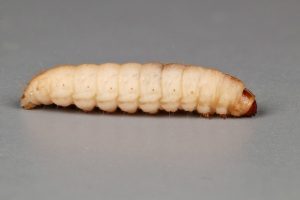Use of model insects for the development of immunomodulation strategies for the treatment of infectious diseases.
The classic therapeutic approach to infectious diseases involves the administration of drugs that work by restricting the proliferative potential of the pathogenic microorganism. Despite its enormous success, this strategy is not without serious limitations, including the selection of multi-resi-stant strains.
Immunomodulatory drugs act in a direct way on the immune system of the host: a) implementing the effectiveness of the effector mechanisms; b) directing the response towards the effector mechanisms most appropriate to the specific context; c) mitigating the inflammatory damage to host tissues that often accompanies immune responses. Immunomodulatory drugs may thus represent an important adjunct to the use of classical chemotherapeutics, although, at present, they represent a largely unmet promise.
Our group studies a model of host/parasite interaction in insects. Nematodes of the genus Steinernema are capable of infecting lepidopteran larvae, specifically, we use Galleria mellonella larvae. These nematodes are assisted by entomopathogenic bacteria of the genus Xenorhabdus that induce in the larva a deep state of immunodepression, thus a septic pathology. In our model, in fact, Xenorhabdus nematophila evades the immune response of the host by acting simultaneously at multiple levels.
Immunomodulation strategies aimed at altering the course of the infection, and improving the “prognosis” of the infection, are being studied in our laboratory. To this end the targets of therapeutic intervention are
a) pathway of the biosynthesis of eicosanoids
b) pathway of phenol-oxidase and melanization
c) pathway of nitric oxide synthetase
Since insects and mammals share some fundamental pathways of immune response activation, it is likely that the immunomodulation results obtained in our model can be at least partially translated to mammals. Moreover, this type of study aims to investigate the possibility of using animal models such as insects, and alternatives to mammals, in order to limit the use of the latter in experimentation.
Staff and contacts
Find us: Via Manara, 7; 21052 Busto Arsizio (VA)
